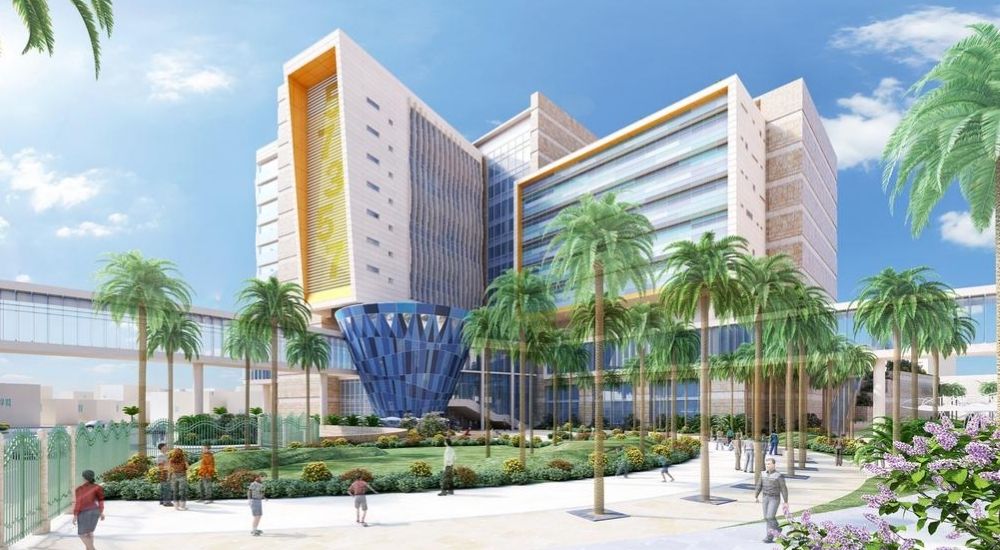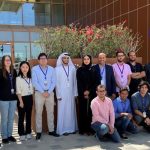CallisonRTKL draws attention to productive living with technological infrastructure in Egypt

CallisonRTKL, a global cultural agency specialising in architecture, planning and design, has published a report forecasting the future of the built environment and the key factors that will shape the residential market developments. According to the report, the brief for the home is changing. The need now is for productive living environments with the technological infrastructure to support residents. Consequently, a new era is driving hybrid lifestyles and hybrid working cities.
In Egypt, 17 smart cities are being developed that will be totally reliant on technology. In addition to the smart cities, Egypt is working on several projects to increase the broadband coverage to remote areas in the country. This supports Egypt’s Vision 2030 which emphases the importance of increasing innovation for the development of more connected buildings and cities, driving national development, economically and environmentally.
CRTKL has developed a number of projects in Egypt including the Children Cancer Centre in Cairo, the Mall of Egypt, Almaza City Centre, Cairo Festival City and its mall expansion.
Ahmed Ghobara, Senior Associate at CRTKL commented, “The residential market and the demands being placed on the home have changed. The need now is for places that are fluid, flexible and authentic. Across the Middle East region and in Egypt, people are demanding a more dynamic lifestyle offering that caters to new hybrid working styles and provides greater community and cultural connection. The rise of smarter buildings is leading to the development of smarter cities that are more connected and more efficient than ever before. At CRTKL, we are developing a blueprint for new buildings that will be more hybridised with changeable systems, structures and modules that can be adapted to suit the evolving needs of the market.”
According to the report, three new concepts are driving residential development.
The Home of Things
The ‘Home of Things’ refers to the physical objects within the home that are embedded with sensors, processing ability, software and other technologies that connect and exchange data with other devices and systems over the Internet or other communications networks. Innovative technology in a fully integrated HoT allows endless opportunities for improved home performance and convenience. Connected and controlled through a resident’s mobile device, the HoT could support amenities by tracking, measuring and improving personal energy usage and well-being. Biometric data gathered here could then be shared with in-house practitioners or resident nutritionists, counsellors, and other health professionals that could rotate through a new type of hyper-local medical office or telemedicine pods that are built into the offer.
In Egypt’s new administrative capital on the outskirts of Cairo, residents will use smart cards and apps to unlock doors and make payments and use the internet on public WiFi. Through mobile apps and data, citizens will be able to manage all their life affairs from their smart phones.
The Branded Residence – Residential meets hospitality meets healthcare
New attitudes about health, wealth, and family are transforming an industry that formerly defined by medical care and home equity. To attract both the booming young and elderly populations, development is moving in a new direction towards brand residences and a lifestyle product that blends residential operations with a hospitality approach that is based on a professionally managed rental model. These models will focus on holistic health, community integration and mixed-use opportunities, incorporating wellness programs across education, exercise, health, nutrition and intergenerational connection.
The Hybridised model or a ‘Universal Building’
There is a need for the new building typology to feature shared uses that come together to form a hub for a community of creatives, who blend living with working and socialising. The Universal Building allowing for flexible development strategies to take shape over time. With the ability to easily shift the program mix, this supports a city’s strategic goals in that it offers innovative housing and workplace options for an evolving and diverse community. It refers to a framework building with changeable systems, structure, and modules. This uniquely flexible platform can adapt program uses based on changing market needs. From the column grid to carefully considered floor-to-floor heights, the building will easily shift between residential, office and social spaces.





